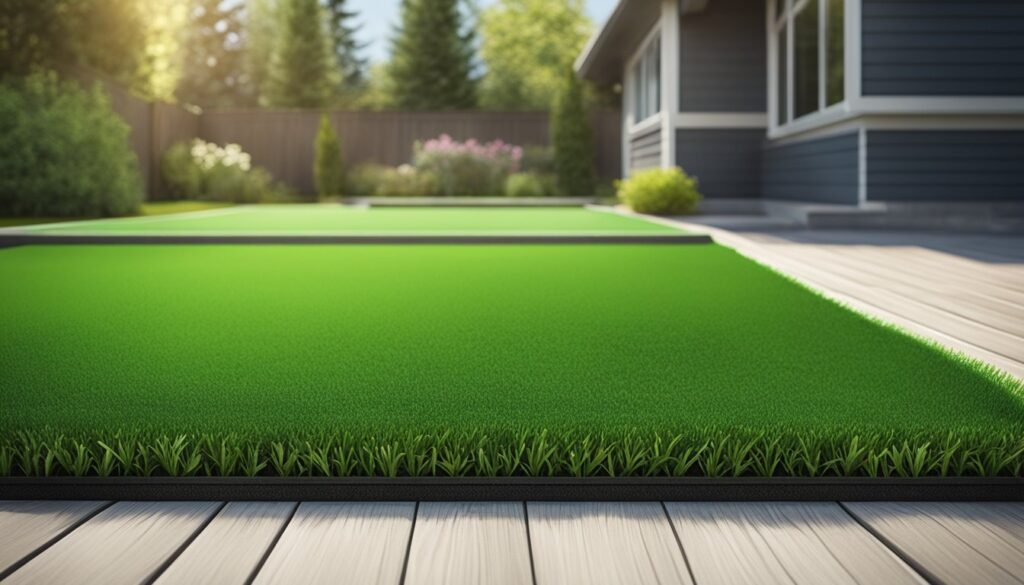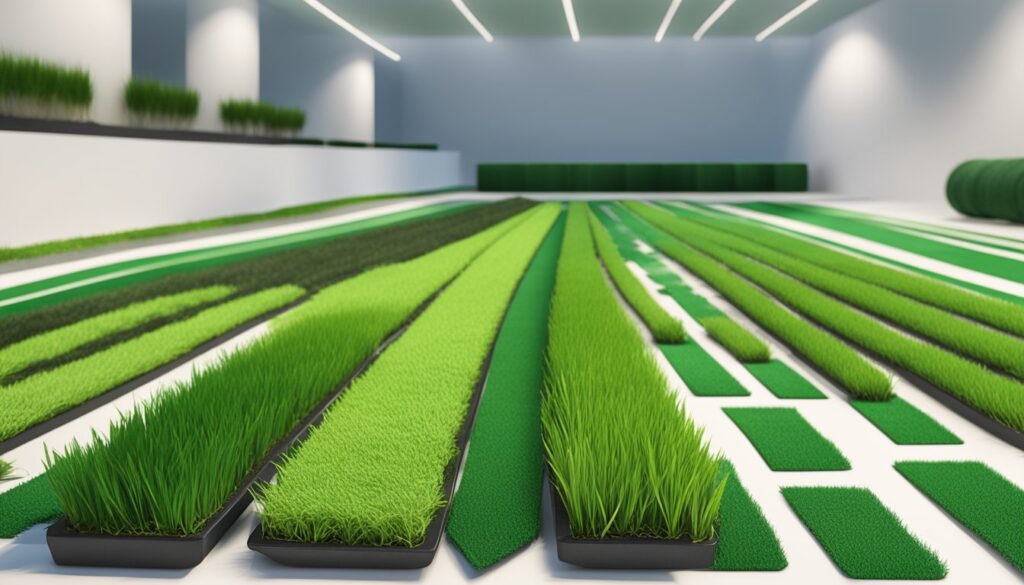If you’re thinking about sprucing up your yard, artificial grass might be on your radar. We know many Canadian homeowners are curious about the cost of this low-maintenance lawn option.
Let’s talk about what you can expect to pay for artificial turf in Canada with Artificial Grass Winnipeg.
The price of artificial grass in Canada typically ranges from $8 to $18 per square foot for professional installation. This means for a 1,000-square-foot area, you’re looking at anywhere from $8,000 to $18,000. Keep in mind, that this includes more than just the turf itself – it covers prep work, installation, and cleanup too.
We’ve found that the cost can vary based on the quality and type of artificial grass you choose. Some options start at $5 per square foot, while premium varieties can go up to $20. The good news is that while it might seem pricey upfront, artificial turf can save money in the long run compared to maintaining a natural lawn.
Understanding the Costs of Artificial Turf

Artificial turf prices in Canada can vary widely. The total cost depends on several key factors and how it compares to natural grass over time.
Factors Affecting Artificial Turf Cost
The cost of artificial grass in Canada typically ranges from $5 to $20 per square foot. This price includes materials and installation. The exact amount depends on:
• Quality of turf
• Size of the area
• Ground preparation needed
• Type of infill used
Higher-end turfs with realistic looks and feels cost more. Larger areas may have a lower price per square foot. Tricky installations on slopes or uneven ground increase labour costs.
Some popular artificial grass brands and their costs per square foot are:
• ForeverLawn: $5.93 to $12.68
• SYNLawn: $6.61 to $9.71
• Everlast: $2.68 to $6.74
These prices are in Canadian dollars. The final cost will also include infill, which helps the blades stand up and adds cushioning.
Comparing Artificial Turf and Natural Grass
While artificial turf has a higher upfront cost, it can save money over time. Here’s a breakdown for a 1,000-square-foot area:
• Artificial turf: $13,815 average installation cost
• Natural grass: $1,500 average installation cost
But natural grass has ongoing costs that add up:
• Mowing: $300/year
• Watering: $250/year
• Fertilizers and herbicides: $200-$300/year
Over 10 years, artificial turf can end up costing less. It needs no water, mowing, or chemicals. This makes it eco-friendly too.
Artificial grass lasts 15-25 years with proper care. Natural grass needs constant upkeep. For busy homeowners, the time saved on lawn care is also valuable.
Types of Artificial Turf and Their Benefits

Artificial turf comes in various types, each with unique features and advantages. We’ll explore the materials used, quality factors, and key benefits of choosing synthetic grass for your outdoor space.
Materials and Quality of Artificial Turf
Artificial turf is made from different materials, each suited for specific uses. The main types are:
- Polyethylene: Soft and natural-looking, great for lawns
- Polypropylene: Durable and affordable, good for high-traffic areas
- Nylon: Extremely strong, ideal for sports fields
Quality factors to consider include:
- Blade shape: Affects the look and feel of the grass
- Face weight: Determines density and durability
- Colour: Choose from various shades of green for a natural look
Higher quality artificial grass costs more but lasts longer and looks more realistic. It’s worth investing in the best quality you can afford for your needs.
The Advantages of Choosing Synthetic Grass
Synthetic grass offers many benefits for Canadian homeowners:
- No maintenance: Say goodbye to mowing, watering, and fertilizing
- Cost-effective: Save money on lawn care in the long run
- Eco-friendly: Reduces water usage and eliminates pesticides
It’s great for families with pets and children, providing a safe and clean play area. Artificial turf stays lush and green all year round, even in harsh Canadian winters.
We love how versatile it is. You can use it for front lawns, backyard putting greens, or even indoor spaces. It’s a practical solution for areas where natural grass struggles to grow.
Installation Essentials
Installing artificial turf involves careful planning and proper techniques. We’ll explore key steps for preparing your space and adapting installation for different settings.
Preparing for Artificial Grass Installation
Before laying artificial grass, we need to prep the area. First, we remove existing grass and vegetation. Then, we level the ground and add a base layer of crushed stone or gravel.
We install a weed barrier to stop weeds from growing through the turf. This step is crucial for long-term maintenance.
Next, we add a layer of sand to create a smooth surface. We compact it well to prevent future settling.
For drainage, we slope the base slightly. This helps water flow away from buildings and prevents puddles.
Installing Artificial Grass for Different Settings
Artificial grass works in many places. For putting greens, we use a shorter pile height and add extra infill for true ball roll.
On rooftops and decks, we use a lighter base to reduce weight. We make sure there’s proper drainage to prevent water buildup.
For high-traffic areas like pathways, we use denser turf and add extra infill for durability.
Around gardens and bushes, we cut the turf carefully to fit. We leave room for plant growth and easy access for watering.
In all cases, we secure the edges well. This stops the turf from lifting or shifting over time.
Aftercare and Maintenance
Keeping your artificial turf in top shape takes some effort, but it’s much easier than caring for natural grass. Regular upkeep helps your lawn stay beautiful and safe for years to come.
Maintaining Your Synthetic Turf
We recommend brushing your turf weekly to keep the blades upright and prevent matting. Use a stiff-bristled broom or a special turf rake for best results. Remove leaves and debris often to stop them from decomposing on the surface.
For pet owners, prompt clean-up is key. Rinse pet waste areas with water and use an enzyme cleaner for stubborn odours. In spring, give your turf a deep clean with a mild soap solution to freshen it up.
Here’s a quick maintenance checklist:
- Brush weekly
- Remove debris regularly
- Clean up pet waste promptly
- Deep clean annually
Long-Term Considerations and Value
While the upfront cost of artificial turf can be high, it often pays for itself within 8-10 years. We save money on water, mowing, and fertilizers. Plus, we don’t need to replace our lawn every few years like natural grass.
Artificial turf stays lush and green year-round, boosting our home’s curb appeal. It’s also safer for kids and pets, with no harmful chemicals or uneven spots to trip on.
For business owners, the low maintenance and tidy appearance can attract more customers. And our neighbours will appreciate the neat look without the noise of lawnmowers.
Remember, proper aftercare is crucial for longevity. With good maintenance, our artificial turf can last 15-20 years, making it a smart long-term investment.

